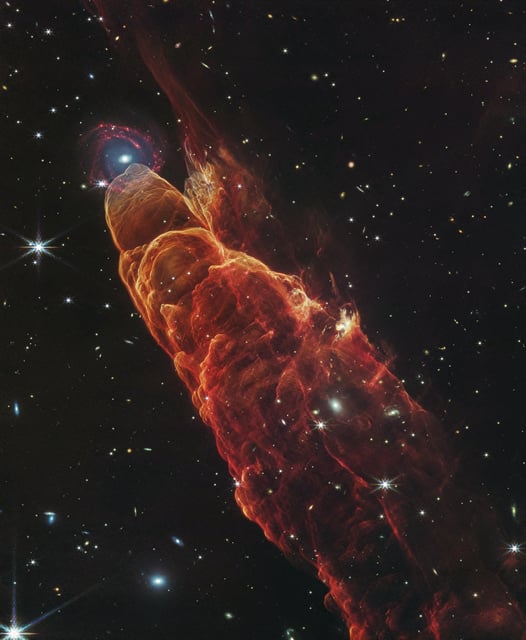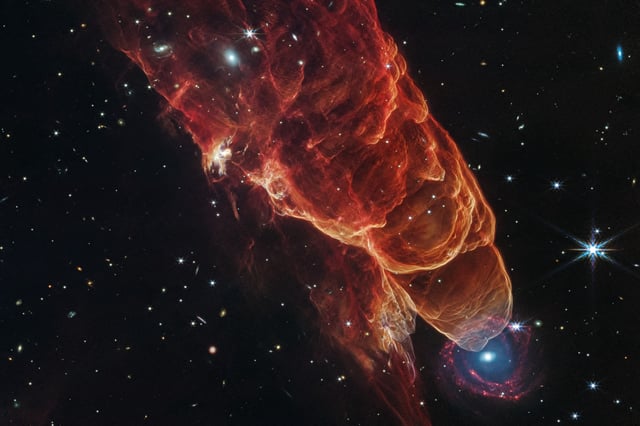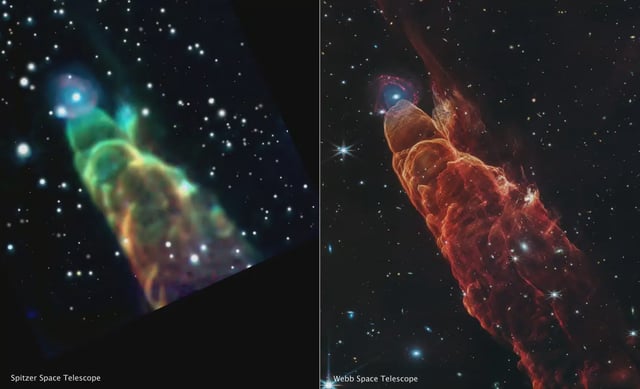Overview
- The James Webb Space Telescope captured a high-resolution image of Herbig-Haro 49/50, a protostellar outflow located 625-630 light-years away in the Chamaeleon constellation.
- The previously unclear object at the tip of the outflow, first observed by the Spitzer Space Telescope in 2006, has been identified as a distant face-on spiral galaxy unrelated to the outflow.
- The image highlights glowing hydrogen and carbon monoxide molecules, energized dust grains, and arc-shaped features resembling a boat wake, providing new data on protostellar jets and their environments.
- Scientists confirmed that the protostar Cederblad 110 IRS4, located 1.5 light-years from HH 49/50, is likely driving the jet activity that created the outflow.
- The alignment of the outflow and the spiral galaxy is coincidental, with the expanding edge of HH 49/50 expected to obscure the galaxy over thousands of years.


